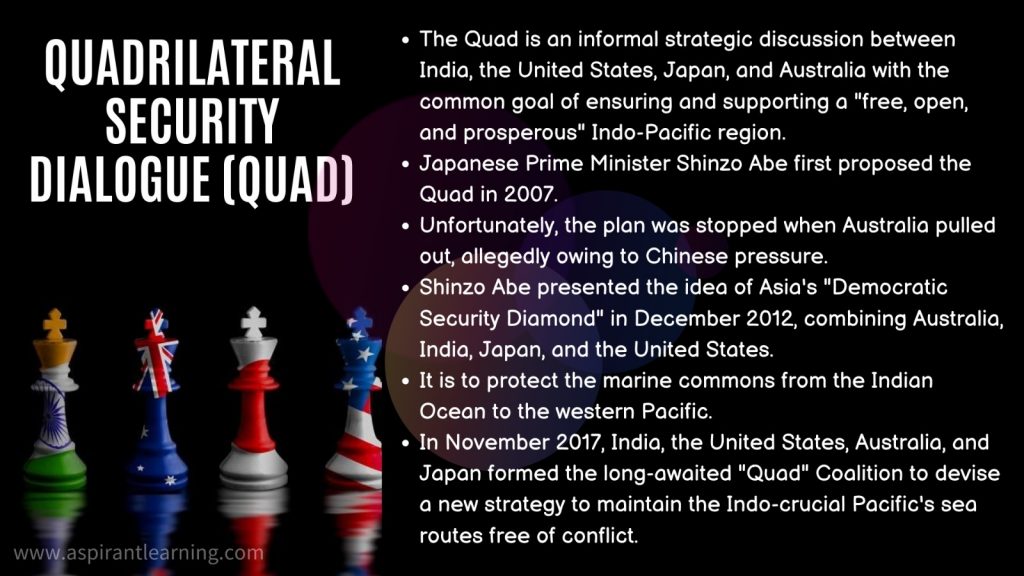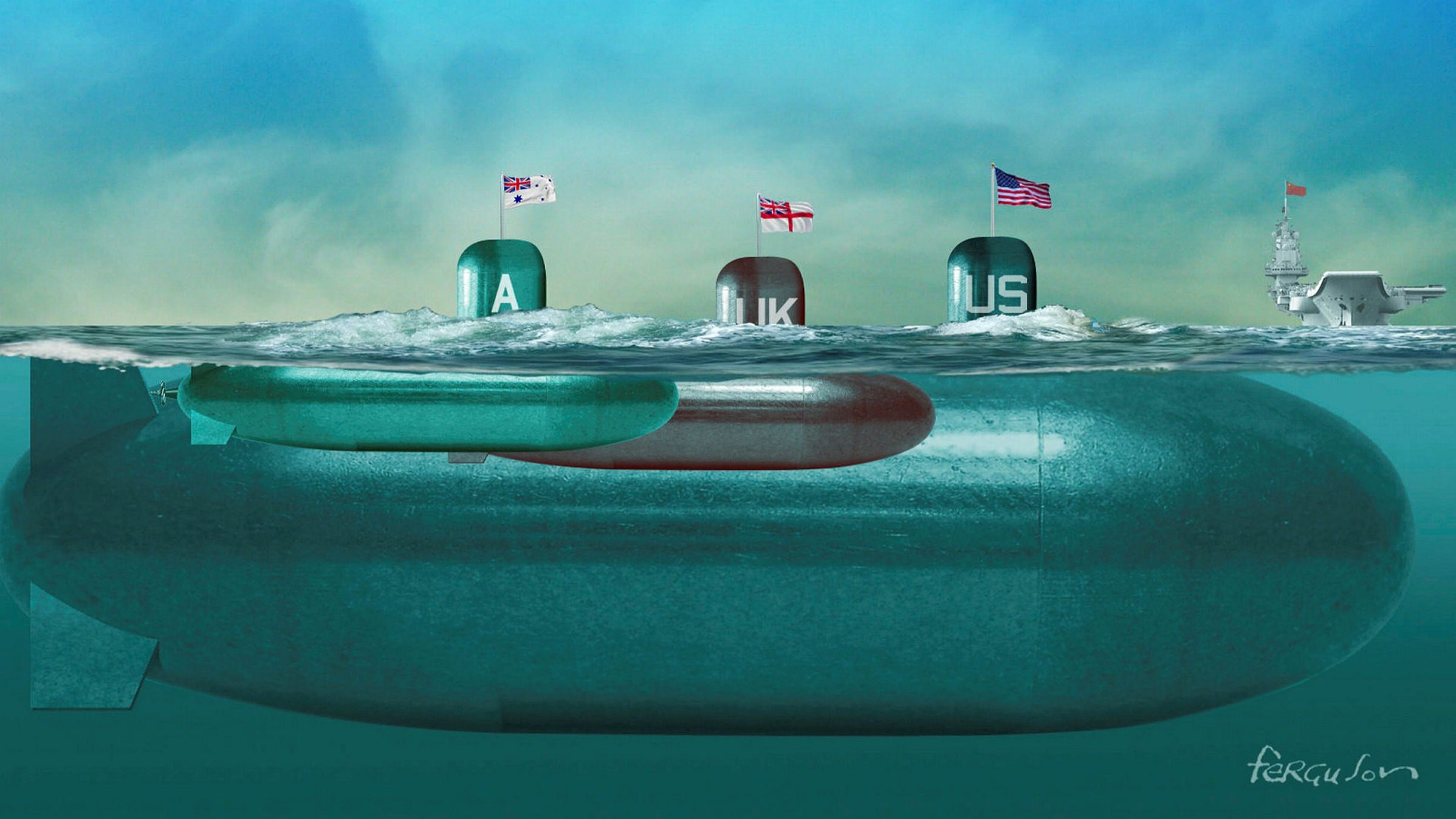News Highlight
A moment of reckoning for AUKUS and Australia.
Key Takeaway
- An announcement on an “optimal pathway” for AUKUS, the security partnership between the US, Australia, and the UK.
- The consequences of Australia’s aspirations to operate a fleet of nuclear-powered submarines within the next decade are significant.
AUKUS
- About
- AUKUS is a new trilateral strategic defence alliance comprised of Australia, the United Kingdom, and the United States.
- Except for the United Kingdom, this is the first time the US has shared nuclear propulsion technology with an ally.
- When the Australian Navy’s commander asked the UK for aid in procuring nuclear-powered submarines, the UK established the AUKUS alliance.
- Joseph Biden, Scott Morrison, and Boris Johnson discussed this at England’s June 2021 G7 conference.
- It is not a collective defence treaty.
- It does not replace Australia’s 1951 ANZUS Treaty with the United States or alter its strategic connection with the United Kingdom.
AUKUS Alliance
- Background
- The apparent scope of the Chinese threat in the Indo-Pacific region has grown significantly in recent years.
- In this environment, nuclear-powered submarines have a higher range, are faster, and are more difficult to detect.
- Meanwhile, the United States may send attack submarines from HMAS Stirling, an Australian navy installation near Perth.
- The US will lead the endeavour and the specific technologies it is willing to provide.
- As well as, the UK’s participation in submarine supplies is unknown.
Purpose of AUKUS
- AUKUS is a new trilateral security alliance created by Australia, the United Kingdom, and the United States for the Indo-Pacific region.
- Australia will purchase nuclear-powered submarines as part of the strategy, with aid from the United Kingdom and the United States.
- The agreement seeks to keep a lid on a growing China exercising its military powers in recent years, from the South China Sea to the Indian border in Ladakh.
- Beijing’s booming economy supports the rapidly expanding Chinese Navy.
- American officials describe the most rapid military build-up since World War II.
- The three countries of the AUKUS alliance will collaborate on new technologies such as;
- Applied AI, quantum technologies, and submarine capabilities via the AUKUS platform.
- The United States and the United Kingdom will share technologies with Australia to build nuclear-powered submarines.
- Its primary goal is to produce a class of nuclear-powered submarines.
- It also wishes to participate in the Indo-Pacific region and advance technology.
Significance of AUKUS
- Under the AUKUS agreement, the United States and the United Kingdom will help Australia build at least eight nuclear-powered submarines.
- AUKUS will help to create new jobs in the defence industry.
- And the submarine project, which will take decades, will demand cutting-edge technology.
- First, the three countries’ naval officials and technical personnel will work together over the next 18 months.
- Due to technological complexity, Australia’s nuclear submarine fleet may not be operational until around 2040.
- The ability of nuclear-powered submarines to stay submerged for extended periods with enough fuel to continue for years theoretically.
- It is advantageous in stealth attacks, which is their major advantage.
- Traditional submarines driven by diesel-powered electric engines must surface regularly to recharge their batteries, making them more detectable.
- The new military alliance will be important in resolving the Indo-geopolitical Pacific’s position.
- Analysts believe the purpose is to curb the spread of China’s footprint.
- The AUKUS alliance has outlined several steps to prepare Australia’s military infrastructure to deliver AUKUS capabilities.
- The most noteworthy of these projects was the proclamation of a “Future Naval Base” on Australia’s east coast.
Implications for India
- The developments surrounding AUKUS are instructive for Indian observers.
- Obtaining nuclear propulsion technology is going to be difficult for India as well.
- India has not signed the Non-Proliferation Treaty.
- Due to the hurdles n transferring technology for HEU-fuelled reactors in nuclear attack submarines from the United States and the United Kingdom;
- India has only one viable option: purchasing a high-power reactor from France.
- However, a viable option for India is the miniaturised low-enriched uranium (LEU) reactor core for SSNs.
- It would impose its constraints, including India’s reliance on France for reactor fuel and the requirement for frequent refuelling.

Way Forward
- AUKUS continues to be a military treaty with the ability to influence the strategic contours of maritime Asia.
- Reform the US export control regime by establishing a “carve-out” of the International Traffic in Arms Regulations (ITAR).
- Acquiring key technology from the United States remains a more difficult prospect for India.
- It has never been in the same category as Australia as a US partner.
- For Australia to deploy nuclear-powered submarines with reactors powered by high-enriched uranium (HEU).
- Iran must exploit a loophole allowing non-nuclear weapon states to extract fissile material from the International Atomic Energy Agency (IAEA)-monitored stockpile.
- Removing the nuclear reactors could set a dangerous precedent, allowing potential proliferators to utilise naval reactors as a cover for future nuclear weapons development.
Pic Courtesy: Financial Times
Content Source: The Hindu



